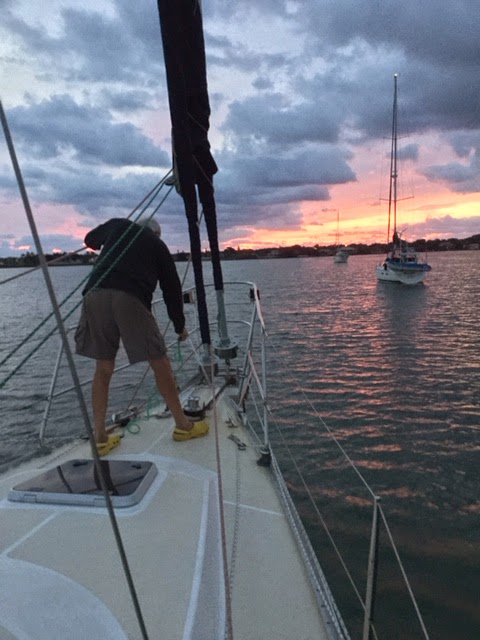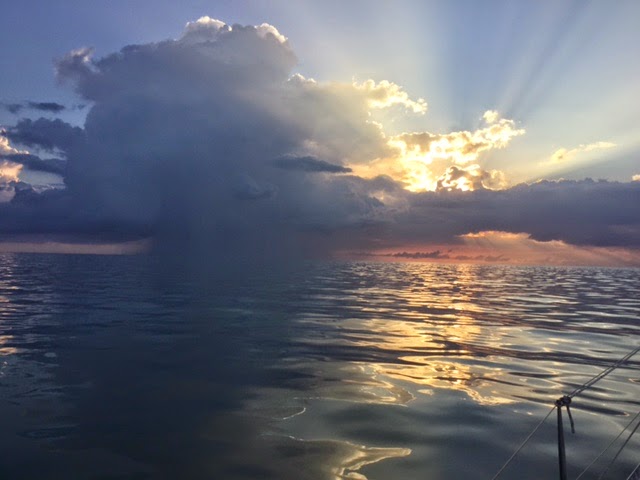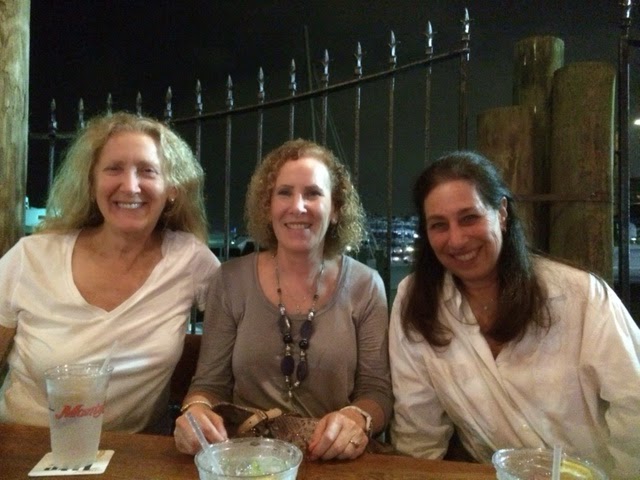Here is a view, looking east toward the mooring field in
Marathon from ILENE.
And the marina's inner dinghy dock with lots of room. They have as much room again at the outer dinghy docks to the right at the rear end of the photo. And they have "project rooms" where you can sew sails, varnish your oars, etc.
We had a very pleasant day with Bev, who was introduced
to us by my friend, Hugh. She picked us up in her truck and drove us back to her beautiful
home on Duck Key, about twelve nautical miles back east from here. Bev served us a
lunch, let us do laundry and take showers, took me to Home Depot and Lene to
Publix and then we had happy hour and dinner with her at the Sunset Grill, at the western end of
Marathon, with great sunsets, before driving
us back to our dink. It was a very full afternoon, on a day when the wind had
moderated somewhat so we were not afraid to leave ILENE unattended. Bev
lost her husband, suddenly, less than two years ago. They were boaters so she
knows how to treat cruisers. She has five lovely grandkids in MA and in MO, where
she will be moving back to soon. Bev is a pretty woman but sadly declined the offer to appear in this blog. Duck Key is an upscale residential community
on an island south of Route 1, with mostly waterfront homes on the canals that
run through the island. Shopping is a ten mile drive to Marathon. Sadly, we may
never see you again Bev, but if you ever come to NYC and we are home, there is
a berth for you.
These manatees come to the dock where there is a fresh
water hose. But we are not supposed to feed them water because it encourages
them to come in too close where they get hurt by propeller blades. You can see
a white scar on momma's back (upper left). She is ten feet long! They are vegetarians and will not
intentionally harm a human. Sort of a weird cross between a walrus' head, a whale's body and a
beaver's tail.
While at Home Depot, with a lot of help from a very knowledegable
staffer, I bought all of the parts (except nuts, bolts, washers and sealant -- which I had) to install the aft, 360 degree white running light atop a length
of PVC pipe.
The problem was that the base of the light had only a threaded
hole for a six mm bolt. I needed to create a stub to stick into the PVC.
About two hours of work the next morning in the wind sheltered inner dinghy dock area, and it is done. Until now we had to hold the
white light on the top of one of our heads, which gets tiring on the arms after a
while. And while I was at it, after looking at MANY other dinks at the dock, I
tied a thin short line around the base of the dink's red and green bow light, with the other end secured in the boat. So when, the section cup fails, as it will, the $35 light will fall into the boat rather than into the sea.
Then we met Alex, proprietor of SeaTek. He had come
recommended by John and Marcia of s/v Remora. A very pleasant and efficient
young man with a beard who lives aboard his boat, anchored here. He advised us
to visit Marquesas Key on our way to the Tortugas, and stay in an unmarked place where the water is deep enough. He is also an intelligent
and inexpensive marine electrician. He came to our boat, fixed a lot of things
electrical and
ordered the "combiner" we need to solve our battery charging problem which he will install when we stop here on our way north. I had caused one problem when I
installed the batteries: I crossed two black cables causing the Link interface to
confuse the two batteries. Another problem was a fuse that took ten seconds to
replace. He pointed out a poor crimp which I fixed after he left. I took the aft part of the
boat apart before he got here to save time and was very pleased with how
much he got accomplished in one $70 hour.






















































